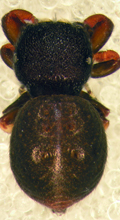Latest News Archive
Please select Category, Year, and then Month to display items
11 March 2021
|
Story Rulanzen Martin
|
Photo Courtesy of the artists
![]()
The annual final-year Fine Arts graduate exhibition promises to once again entice even the biggest of art enthusiasts. The exhibition, which runs until 1 April 2021, highlights the artworks/projects of final-year students in the Department of Fine Arts.
 Louiza Combrinck, World-building, Digital print, 84 x 49 cm. Image courtesy of the artist.
Louiza Combrinck, World-building, Digital print, 84 x 49 cm. Image courtesy of the artist.
 Final-year graduate exhibition at the Johannes Stegmann gallery
Final-year graduate exhibition at the Johannes Stegmann gallery
 Monique Myburgh, Digital Atoll I, Digital drawing, 70 x 100 cm. Image courtesy of the artist.
Monique Myburgh, Digital Atoll I, Digital drawing, 70 x 100 cm. Image courtesy of the artist.
 Elizabeth Bosch, Blau Macht mich Traurig, Oil on wood, 80 x 62.5 cm. Image courtesy of the artist.
Elizabeth Bosch, Blau Macht mich Traurig, Oil on wood, 80 x 62.5 cm. Image courtesy of the artist.
 Shenique Roux, Perplexed Recollection, Digital print, 40 x 100 cm. Image courtesy of the artist.
Shenique Roux, Perplexed Recollection, Digital print, 40 x 100 cm. Image courtesy of the artist.
UFS entomologists describe a new spider species
2014-02-19
|
 |
It is about 3mm in size and almost looks like a ladybird, but this new spider is the cause of great excitement at the University of the Free State’s (UFS’s) Department of Zoology and Entomology.
The new species of spider, now known as Rhene amanzi, was recently described for the first time and was ‘introduced’ to other arachnologist at the recent congress of the African Arachnology Society at Amanzi Private Reserve.
Dr Charles Haddad, senior lecturer in the UFS’s Department of Zoology and Entomology, said they already stumbled upon the male spider in 2010 when a student was doing research at the reserve. After a very long process, the spider was described and a couple of weeks ago, whilst at the congress, they also found the female.
“Up to now we only know that the spider lives in trees in the Brandfort area. The range could be wider, but since it was only described recently, other arachnologists will only now be able to identify accurately.”
Dr Haddad says they still have to determine how many eggs the female is able to lay, what the spider’s life cycle looks like and what their habitual preferences are.
“What we do know is that it probably isn’t poisonous and that the spider imitates a ladybird in order to protect itself against predators.”